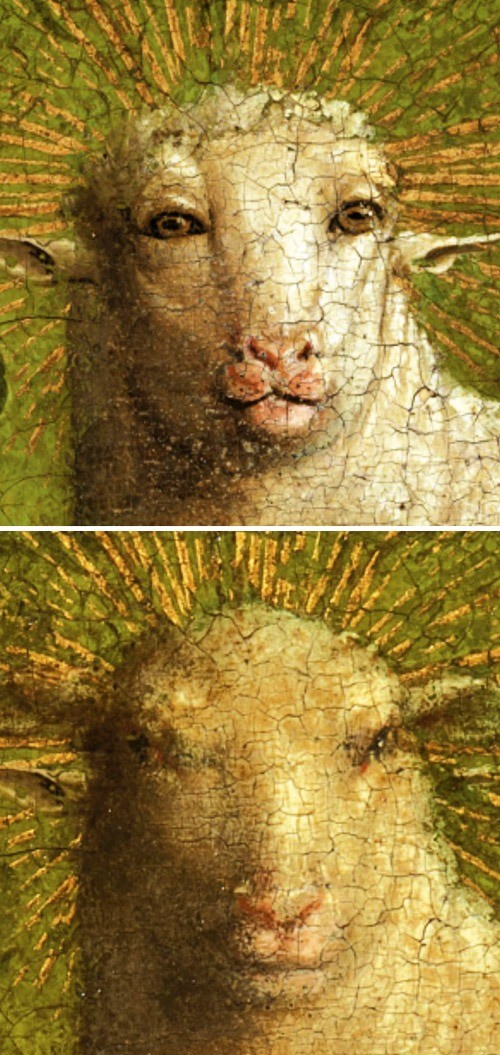by Thomas O’Dwyer

Across Europe, the doors of museums and art galleries, along with the gates of sports stadiums, are being slammed shut by the Covid-19 pandemic. This week, the oldest museum in Belgium, The Fine Arts Museum of Ghent, was among them. This is sad for it will prevent tens of thousands of art lovers and tourists from seeing a brilliantly restored 600-year-old masterpiece that has survived the slings and arrows of outrageous history to become a legend — and even a viral internet meme — along the way. Among its many adventures, it was stolen by Napoleon and was again looted and almost blown up by Adolf Hitler. Many art historians consider Jan van Eyck’s Ghent Altarpiece, also known as the Adoration of the Mystic Lamb, to be the most exceptional work of art ever created — sorry, Mona Lisa. The brilliantly restored altarpiece was the anchor of Jan van Eyck Year, a national celebration of the painter’s life and art. The exhibition, Van Eyck: An Optical Revolution, was the gold crown on the events.
Hubert van Eyck started to work on the painting around 1420, six years before his death, and his younger brother Jan continued and completed it in 1432. It is gratifying to note that the altarpiece, 3.5 meters wide by 4.5 meters tall, still stands in the place for which it was commissioned 600 years ago – in the chapel of St Bavo’s Cathedral in Ghent. But it is also startling to discover that it features in the Guinness Book of Records as the most stolen piece of art in history. Indeed one of its panels is still missing since thieves stole it 86 years ago and Belgian police have a 2,000-page file on the mystery.
The “optical revolution” title of the now-closed Ghent Museum exhibition was admirable, as even a casual glance at reproductions of the paintings make clear. We have become so used to photography and realistic art in recent centuries that it is almost impossible to imagine the impact that Jan van Eyck had on the artistic world of his day. But we can still be astonished as we examine the exquisite fine detail in every square centimetre of his work – jewellery, decorative designs on clothes and furniture, landscapes, skies, flora and fauna, even lettering. Botanists can still identify the species of meticulously painted plants — the altarpiece features 75 different kinds of herbs, plants and trees. It seems hard to grasp how such realism was captured 400 years before the first camera. Read more »
